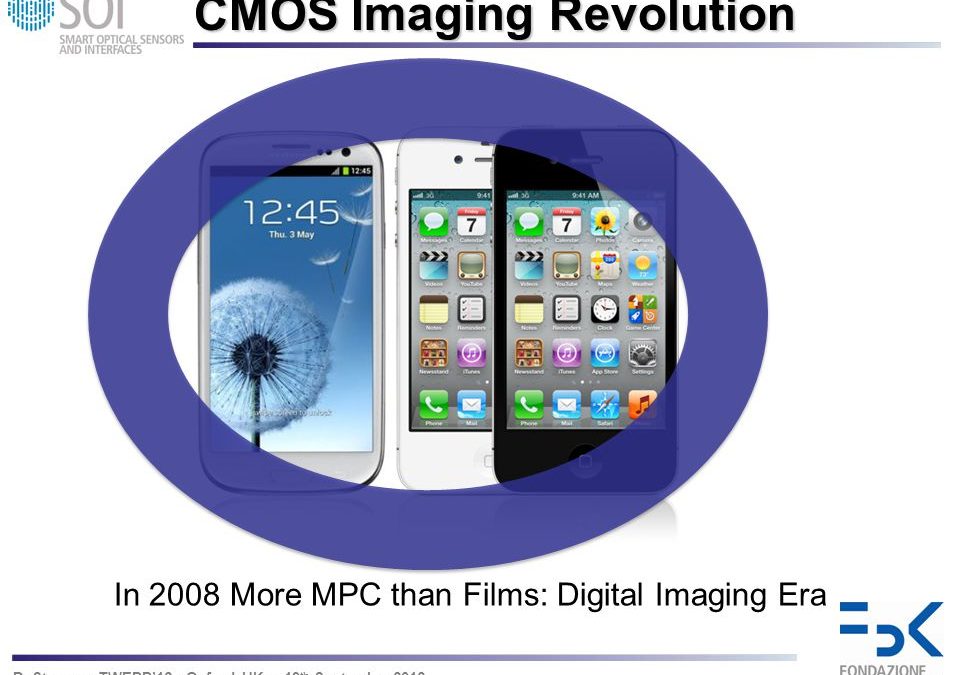The Digital Imaging Revolution
The invention of the Charge-Coupled Device (CCD) FPA by Boyle and Smith in 1969 was a major breakthrough for entire elds and industries who depended on the reliable sampling, storage and transmission of optical signals . The CCD is the rst integrated circuit device that could reliably convert an optical image to a digital signal. Until then one either had to use lm or bulky tubes that required an electron beam to be scanned across an image scene, such as the Image orthicon . The invention of the digital camera by Sasson followed shortly after . Several years later the rst digital spectrometer was invented. In the digital spectrometer the exit slit of the monochromator was replaced by the CCD, which allowed for instant and simultaneous measurement of the entire spectrum in a compact architecture . The development of the Complementary Metal Oxide Semiconductor (CMOS) FPA was also important. While in scientic settings, it could not rival the quality of the CCD, its cheaper cost brought digital imaging to the consumer level. Other technology like the digital computer and computer networking also provided major contributions to the democratization of imaging and optical sensing. While scientic grade optical instrumentation was and is still expensive, the researcher could at least capture, process, and share measurement data with signicantly less effort. With out it, the eld of computational sensing would not exist. Algorithms for efficient and reliable storage and transmission of digital images became more important. Over time the pixel count continued to increase and the sheer volume of digital image and video data being generated and transmitted over networks began to outpace improvements in storage and transmission capacity. While many engineers developed new technology to combat the hardware limitations of storage and transmission. This also led to a renewed effort by researchers to develop more efficient image and video compression algorithms. Compression techniques all follow the same basic process, see Figure 5. Once the CCD samples the optical signal and produces the measurement data, the encoder uses the compression algorithm to look for redundancies in the data and produce a compact representation of the signal-of-interest. The compressed data can then either be stored or transmitted or both. The decoder solves the inverse problem of

Figure 5 : A general
owchart for image and data compression techniques. The digital
image is analyzed by the encoder and compressed into a compressed form where it can be efficiently stored or transmitted. The decoder takes the compressed image and converts it back into an image that resembles the original digital image.
In the next section I will discuss how many of the techniques and algorithms used in computational sensing are inspired by the techniques used by the image processing and digital communications community. This is because one of the major efforts of computational sensing is to make resource efficient measurements to reduce the total amount of measurements, whereas in image processing and communications, measurement data is often corrupted, missing, or too large for efficient storage and transmission.


